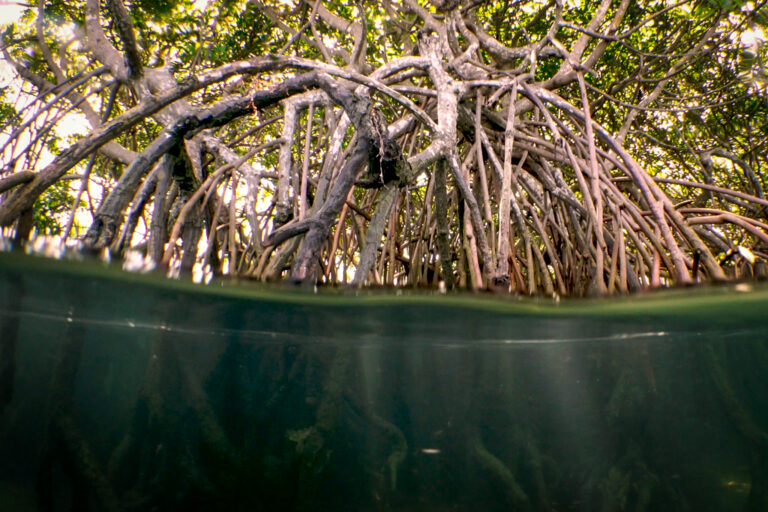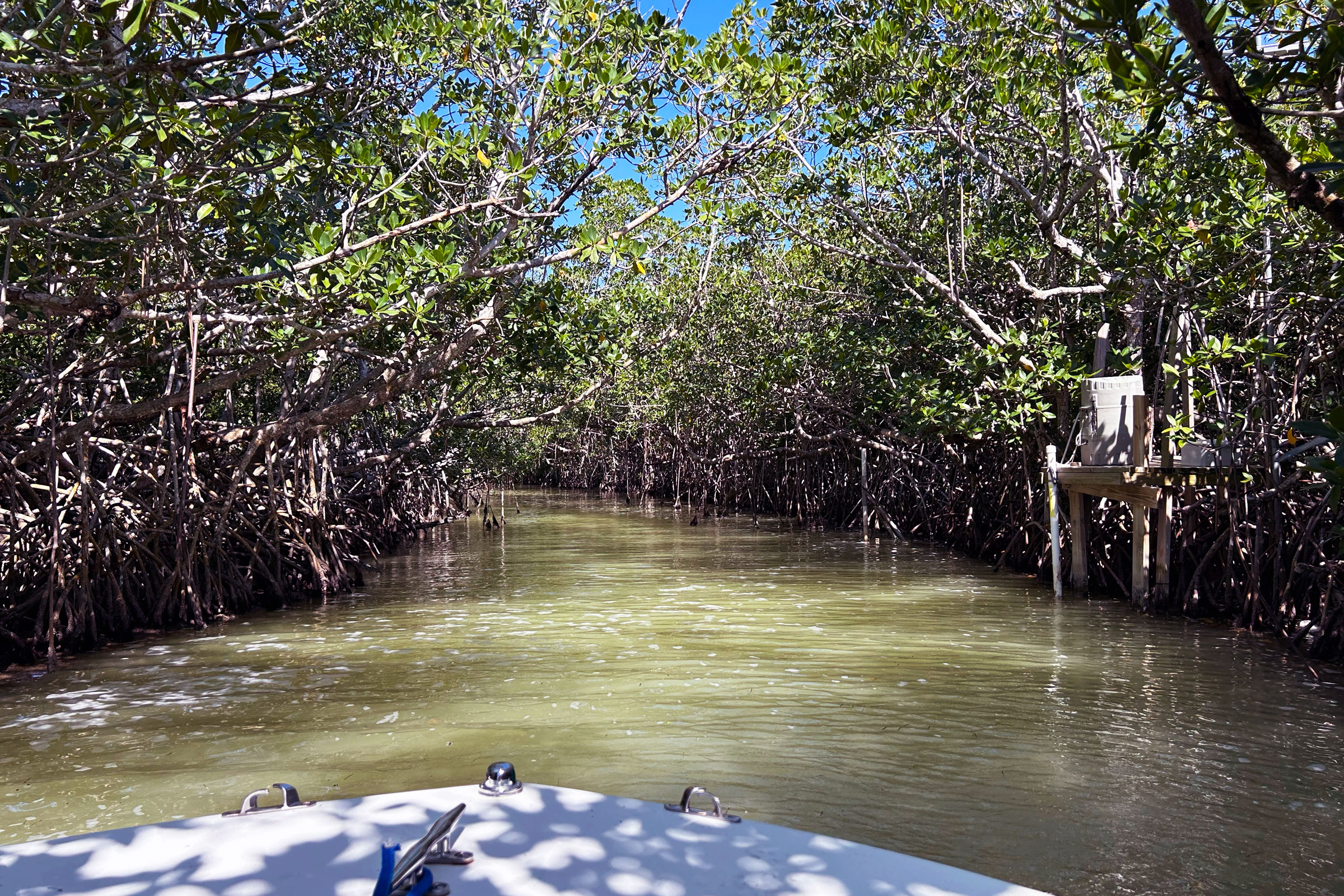
Partnering to protect the Everglades: A unique ecosystem and critical carbon sink
By Cody Kiefer, senior technical specialist on Winrock International's Ecosystem Services team.
Winrock International and The Everglades Foundation have established a lasting partnership focused on evaluating greenhouse gas emissions and carbon storage within various agricultural, freshwater and coastal ecosystems across southern Florida. With the foundation’s focus on ecosystem restoration and resilience, the primary objective of our analyses has been evaluation of the potential climate impacts of the Comprehensive Everglades Restoration Plan, a framework for restoring, protecting and preserving the greater Everglades ecosystem that was enacted by the U.S. Congress in 2000. A unique federal-state partnership, CERP is projected to take 30 years to complete and is the largest hydrologic restoration project ever undertaken in the U.S.
What should we know about climate change in the Everglades, and the work being done by Winrock with The Everglades Foundation?
The Everglades ecosystem provides numerous ecological, economic and cultural benefits to the region. Beyond serving as a wildlife refuge, protecting urban areas from floods and tropical storms, and providing tourism and recreation opportunities, the Everglades play an incredibly important role in sequestering and storing carbon and other GHGs through its plant biomass and deep peat soils. From its expansive sawgrass marshes to the dense mangrove forests at the mouth of Shark River in the Glades’ southwest region, which abuts the Gulf of Mexico, this vast ecosystem plays a critical and complex role in climate change mitigation.
Yet over the last 100-150 years, the Everglades – one of 26 UNESCO World Heritage Sites in the U.S. − have experienced significant changes due to human-induced alterations to the landscape. This includes the creation of the Everglades Agricultural Area and the surrounding water conservation areas, and the diversion of natural water flows to population centers and for drinking water and agriculture. The region’s rich peat soils have subsided, releasing millions of tons of carbon dioxide and other harmful GHGs into the atmosphere. In addition, various habitat types including sawgrass marshes, pinelands, wet prairies, sloughs and mangrove forests have shifted, with plant biomass increasing in some areas and dead zones being created in others.
As a result, the critical role the Glades’ ecosystem plays in climate change mitigation is at risk, especially as sea levels continue to rise and hurricanes increase in intensity.
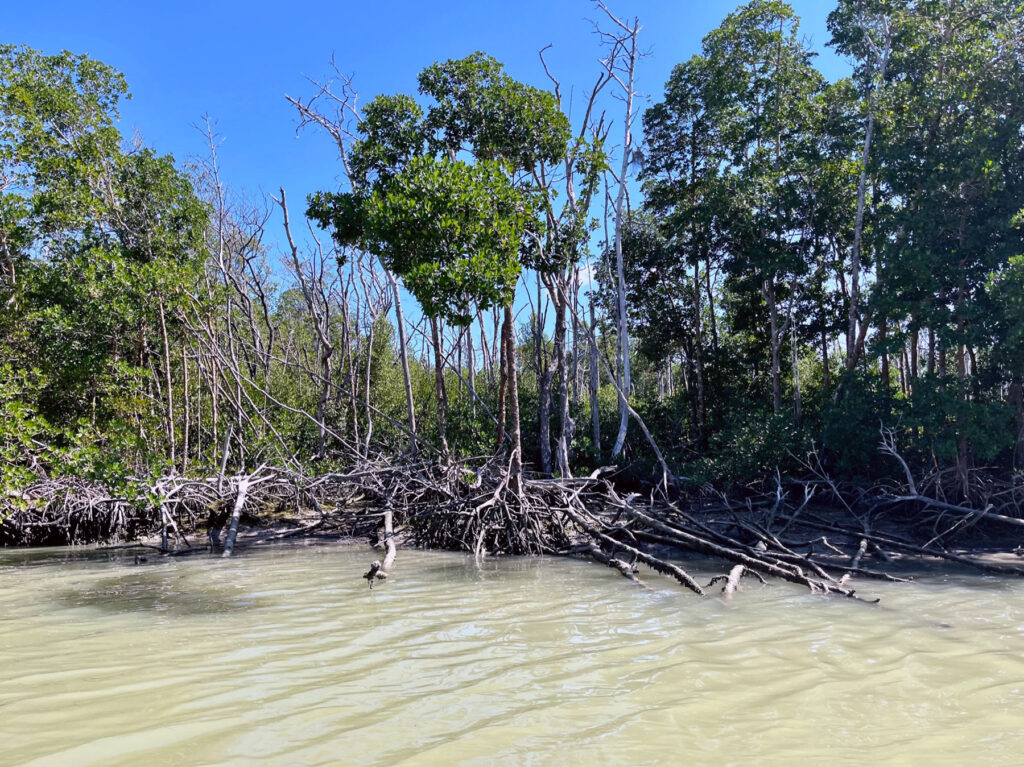
To combat these changes and help to restore the natural functions of the Everglades, Winrock and The Everglades Foundation are working together on the Everglades Carbon Assessment Project, building upon a lasting collaboration that draws from mutual philosophies, complementary knowledge and skills. The focus of Winrock’s work is on assisting the foundation to evaluate GHG emissions from various agricultural, freshwater and coastal ecosystems across southern Florida. Winrock is also supporting the foundation’s efforts to quantify the potential climate and economic impacts of ecological restoration taking place within the Everglades.
Winrock’s current phase of this work has two key components: 1) Quantifying GHG emissions and carbon storage within mangrove ecosystems in relation to freshwater restoration efforts; and 2) Completion of a white paper on the science needs for GHG inventories across the Everglades ecosystem.
As this unique and productive partnership between Winrock and the foundation continues to evolve, I wanted to share three examples of important and interesting knowledge we’ve gained that will help both current and future efforts to protect this unique, carbon soaking ecosystem near the southernmost tip of the U.S.
ONE:
At the beginning of our collaboration, Winrock supported the foundation with an environmental footprint assessment of the Everglades Agricultural Area, focused specifically on GHG emissions coming from the sugarcane industry. This analysis found that 84% of GHG emissions in the EAA come from peat subsidence — the process in which the diversion of natural freshwater flows leads to gradual decomposition of carbon-rich soil (known as peat) that has accumulated over centuries. Winrock’s analysis was recently referenced in a feature story about the Everglades published by Rolling Stone magazine, and the analysis has also fed into a new study on the Social Cost of Carbon, which is currently under peer review.
Since I referenced peat soils and their importance, I’ll point to a couple of factors that make the Everglades peat soil especially interesting. This piece by The Everglades Foundation describes it very well, but essentially, in wetland areas that experience persistent flooding, as in the Glades, soil microbes consume oxygen faster than they receive it, building up a microbial community that can survive without oxygen, anaerobically.
“These specialized anaerobic microorganisms survive by consuming nitrate, sulfate or even carbon dioxide,” the foundation’s piece notes, building up organic soils that in some parts of the Everglades are more than 10 feet deep. However, the long history of draining parts of the Everglades resulted in some areas remaining “too dry for too long,” as is the case in the marshes north of the infamous Alligator Alley – the portion of Interstate 75 that bisects the Glades from about Naples to Ft. Lauderdale, Florida.
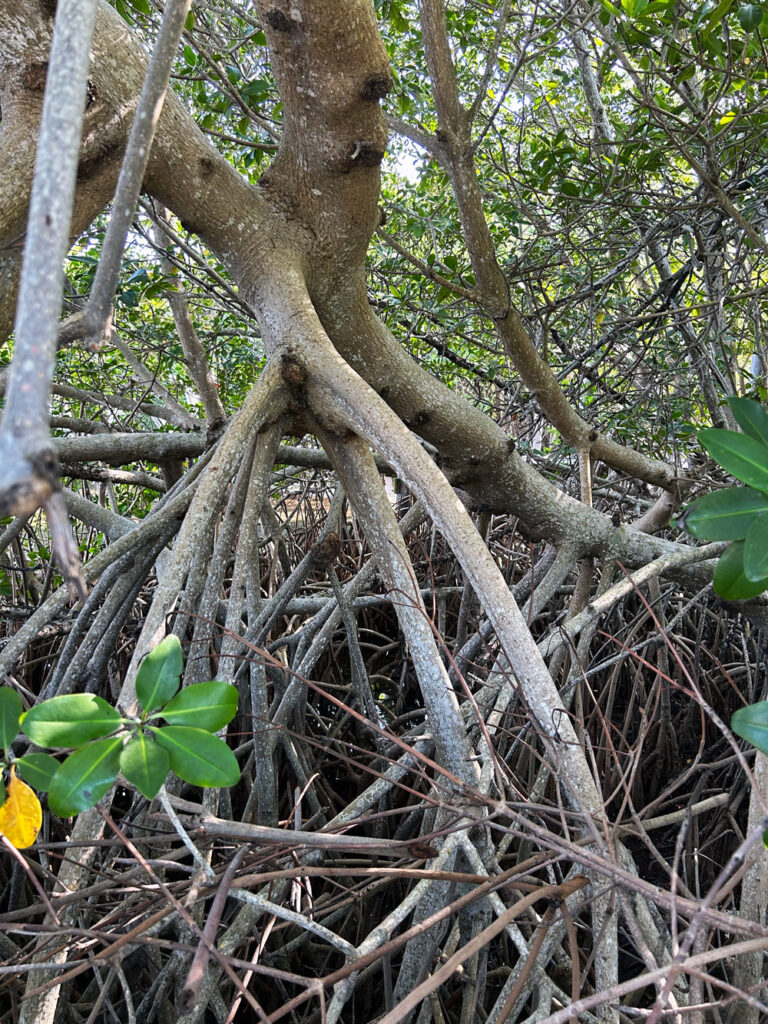
TWO:
More recent analyses conducted under our partnership have focused on evaluating restoration impacts on freshwater ecosystems within the Glades’ water conservation areas and mangrove ecosystems within the Everglades National Park. These analyses have attempted to quantify the influence of increased freshwater flow on the aboveground and belowground carbon pools in various ecosystems.
In the case of mangrove forests, Winrock looked at several key environmental indicators that drive mangrove growth and carbon storage capacity. These include soil salinity, soil sulfide, and hydroperiod – the duration and frequency of water inundation. Using these key environmental factors, Winrock was able to model how mangrove forests may change as new freshwater is introduced across the landscape through the Congressionally mandated CERP (referenced above.) Due to the non-uniform characteristics of mangrove forests across the national park portion of the Everglades, Winrock and the foundation uniquely quantified impacts to mangrove carbon storage in different regions across the landscape. (The figures, below, help illustrate this.)
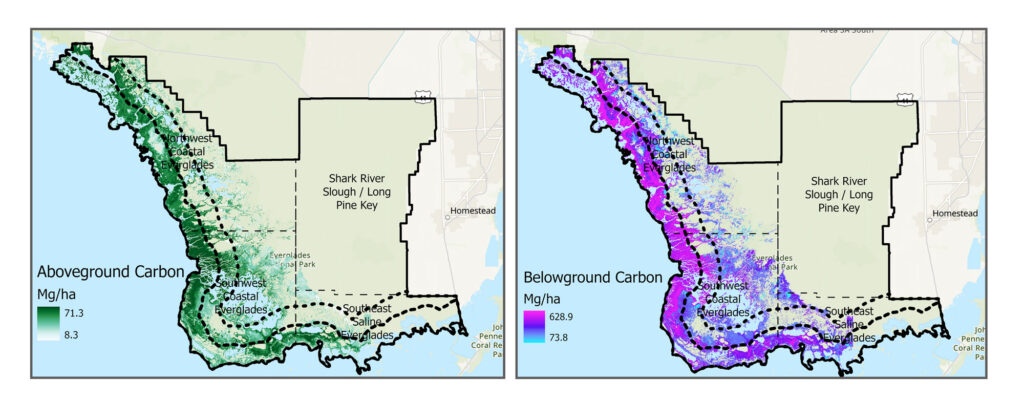
Importantly, results from our study indicate that carbon storage could increase under CERP conditions – i.e., with improved management practices − however the magnitude of change depends on the hydroperiod and nutrient impacts that will differ depending on the region, upstream/downstream location, and forest type.
THREE:
Winrock and the foundation are currently exploring an exciting new partnership with a NASA research team that leads a carbon monitoring program in the Everglades called Blueflux. In September of 2023, I attended a three-day workshop with colleagues from the foundation and members of the Blueflux team in Washington, D.C. Scientists and researchers from Yale University, East Carolina University, Florida International University, and others also attended. We were gathered in D.C. to share research findings from various blue carbon ecosystem studies in the Everglades. Blue carbon ecosystem studies focus on how coastal and marine ecosystems, like mangroves, salt marshes and seagrasses capture and store carbon dioxide. These ecosystems play a crucial role in mitigating climate change by trapping carbon in plants and soils, helping to reduce the overall amount of carbon in the atmosphere.
The NASA Blueflux program in particular is focused on creating high-resolution remote sensing data products that measure GHG fluxes across the different ecosystems in southern Florida.
Using both satellite and aerial measurements taken from small airplanes that fly over the Everglades, in combination with ground measurements recorded at various flux towers, the Blueflux team is able to quantify daily exchanges of carbon and methane across the Everglades’ vast wetland landscape. This is important because with these new datasets, we will be better equipped to understand how this critically valuable mangrove ecosystem will continue to change under restoration conditions and in response to competing human/climate influences.
As a member of Winrock’s Ecosystem Services team, I’m proud that our organization is partnering on this important work, contributing to science-based climate solutions and protecting one of the most unique wetland habitats in our hemisphere. To read more about our work on this project, check out Assessing carbon storage in Florida’s Everglades.
Related Projects
